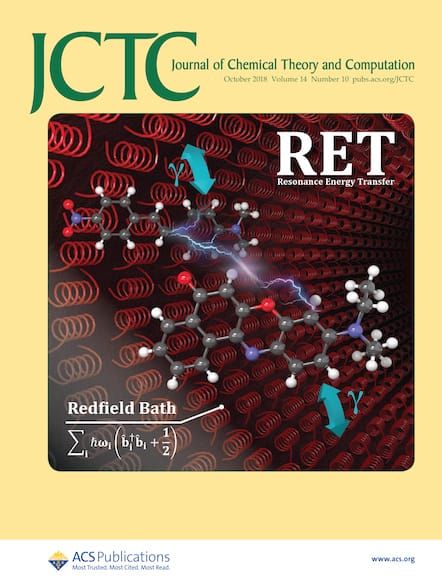有机光伏系统建模的混合函数DFTB参数化。
IF 5.5
1区 化学
Q2 CHEMISTRY, PHYSICAL
引用次数: 0
摘要
密度泛函紧密结合(DFTB)是一种基于近似密度泛函理论(DFT)的量子化学模拟方法,以其低计算成本和与DFT相当的精度而闻名。几年来,DFTB在有机光伏(OPV)中的应用一直受到限制,因为缺乏一套适当的参数来充分考虑相关元素和必要的校正。在这里,我们开发了新的参数化,使用混合函数,包括B3LYP和CAM-B3LYP,用于DFTB方法中的OPV应用,以克服缺乏远程校正的DFT函数中存在的自交互误差。这些参数包括元素H、C、N、O、F、S和Cl的电子和排斥参数。采用贝叶斯优化方法对自由原子的无占据壳层特征能进行优化。这些新参数化的有效性通过12个OPV供体和受体分子的数据集进行了评估,与相应的DFT参考文献相比,显示出一致的性能。研究了前沿分子轨道和优化几何形状,以评估新参数化在预测基态性质方面的性能。此外,利用实时时变DFTB (real-time - TD-DFTB)研究了单体和二聚体的激发态性质。观察了二聚体中电荷转移(CT)激发的出现,并探讨了烷基侧链对光诱导CT过程的影响。这项工作为在现实的OPV系统中研究基态和激发态特性铺平了道路,包括供体-受体界面的能带对准和CT机制。本文章由计算机程序翻译,如有差异,请以英文原文为准。
Hybrid Functional DFTB Parametrizations for Modeling Organic Photovoltaic Systems.
Density functional tight binding (DFTB) is a quantum chemical simulation method based on an approximate density functional theory (DFT), known for its low computational cost and comparable accuracy to DFT. For several years, the application of DFTB in organic photovoltaics (OPV) has been limited by the absence of an appropriate set of parameters that adequately account for the relevant elements and necessary corrections. Here we have developed new parametrizations using hybrid functionals, including B3LYP and CAM-B3LYP, for OPV applications within the DFTB method in order to overcome the self-interaction error present in DFT functionals lacking long-range correction. These parametrizations encompass electronic and repulsive parameters for the elements H, C, N, O, F, S, and Cl. A Bayesian optimization approach was employed to optimize the free atom eigenenergies of unoccupied shells. The effectiveness of these new parametrizations was evaluated by a data set of 12 OPV donor and acceptor molecules, showing consistent performance when compared with their corresponding DFT references. Frontier molecular orbitals and optimized geometries were examined to evaluate the performance of the new parametrizations in predicting ground-state properties. Furthermore, the excited-state properties of monomers and dimers were investigated by means of real-time time-dependent DFTB (real-time TD-DFTB). The appearance of charge-transfer (CT) excitations in the dimers was observed, and the influence of alkyl side-chains on the photoinduced CT process was explored. This work paves the way for studying ground- and excited-state properties, including band alignments and CT mechanisms at donor-acceptor interfaces, in realistic OPV systems.
求助全文
通过发布文献求助,成功后即可免费获取论文全文。
去求助
来源期刊

Journal of Chemical Theory and Computation
化学-物理:原子、分子和化学物理
CiteScore
9.90
自引率
16.40%
发文量
568
审稿时长
1 months
期刊介绍:
The Journal of Chemical Theory and Computation invites new and original contributions with the understanding that, if accepted, they will not be published elsewhere. Papers reporting new theories, methodology, and/or important applications in quantum electronic structure, molecular dynamics, and statistical mechanics are appropriate for submission to this Journal. Specific topics include advances in or applications of ab initio quantum mechanics, density functional theory, design and properties of new materials, surface science, Monte Carlo simulations, solvation models, QM/MM calculations, biomolecular structure prediction, and molecular dynamics in the broadest sense including gas-phase dynamics, ab initio dynamics, biomolecular dynamics, and protein folding. The Journal does not consider papers that are straightforward applications of known methods including DFT and molecular dynamics. The Journal favors submissions that include advances in theory or methodology with applications to compelling problems.
 求助内容:
求助内容: 应助结果提醒方式:
应助结果提醒方式:


